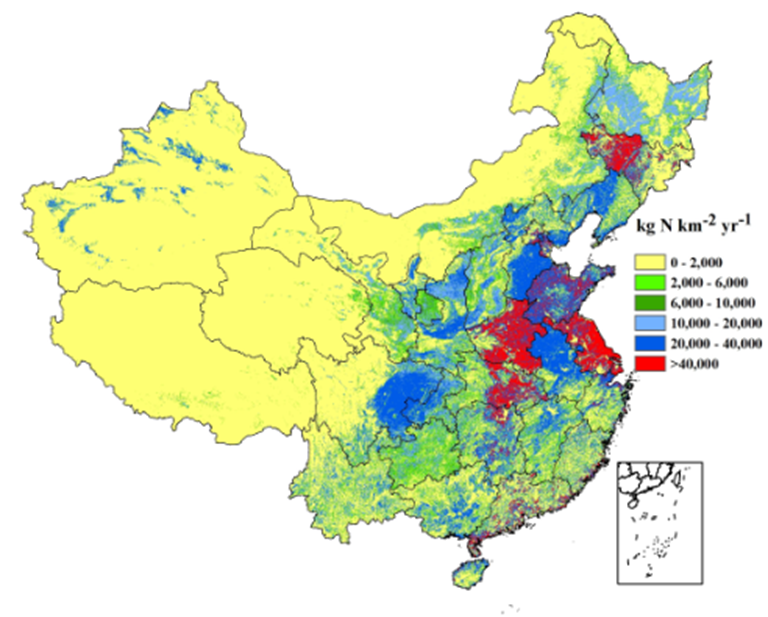Xiaoyuan Yan
Institute of Soil Science, Chinese Academy of Sciences
East Beijing Road 71#, Nanjing, China
yanxy@issas.ac.cn
We evaluated nitrogen input and output in croplands of China throughout 1980-2014. We considered nitrogen input from synthetic fertilizer, organic fertilizer including crop residue, atmospheric deposition and biological nitrogen fixation. The fate of nitrogen input to cropland includes crop uptake, losses to air and water, and remaining in soil. Since the average soil nitrogen did not decrease over the time period, the ratio between crop nitrogen uptake and total nitrogen input can be taken as the overall nitrogen use efficiency (NUE) in the crop production system of China. As a result, the NUE was 46% in 1980, decreased to 35% in 2003, and then gradually increased, to a level of 42% in 2014. The amount of nitrogen input that remained in soil and was used by subsequent crops has been increasing continuously.


Fig. 1 Nitrogen input to croplands of China in 2010.
There are large regional differences in the trend of NUE. The most northern province, Heilongjia, showed a constantly high NUE, but suffered from soil nitrogen loss. Some highly economically developed provinces, e.g., Zhejiang and Guangdong, had low NUE and did not show an increasing trend yet. However, the provinces in the major agricultural region, say Jiangsu, Shandong, Henan, and Hebei, all showed an increasing trend in NUE since early 2000s.
The overall increasing trend in NUE was resulted from a series of knowledge based nitrogen practices, which include the use of enhanced efficiency fertilizers and the optimization of nitrogen application. A meta-analysis showed that, on average, the grain yield was significantly increased by 1.3–10.0% by employing the knowledge-based N managements, while N losses experienced an overall reduction, by 5.4–39.8% for N2O emission, 30.7–61.5% for NH3 emission, 13.6–37.3% for TN leaching and 15.5–45.0% for TN runoff, respectively.


